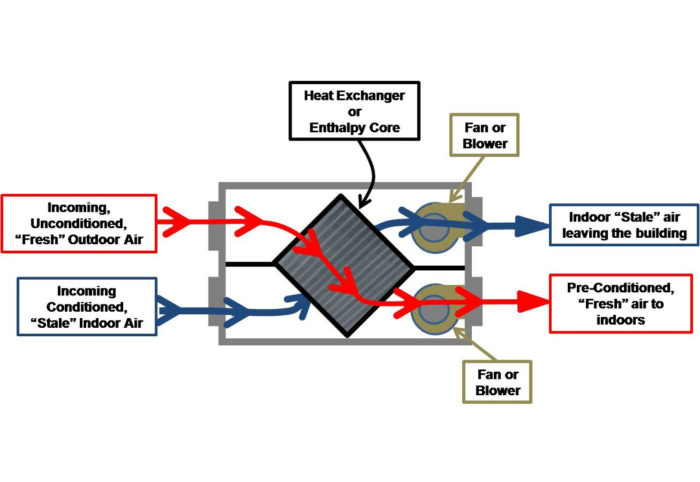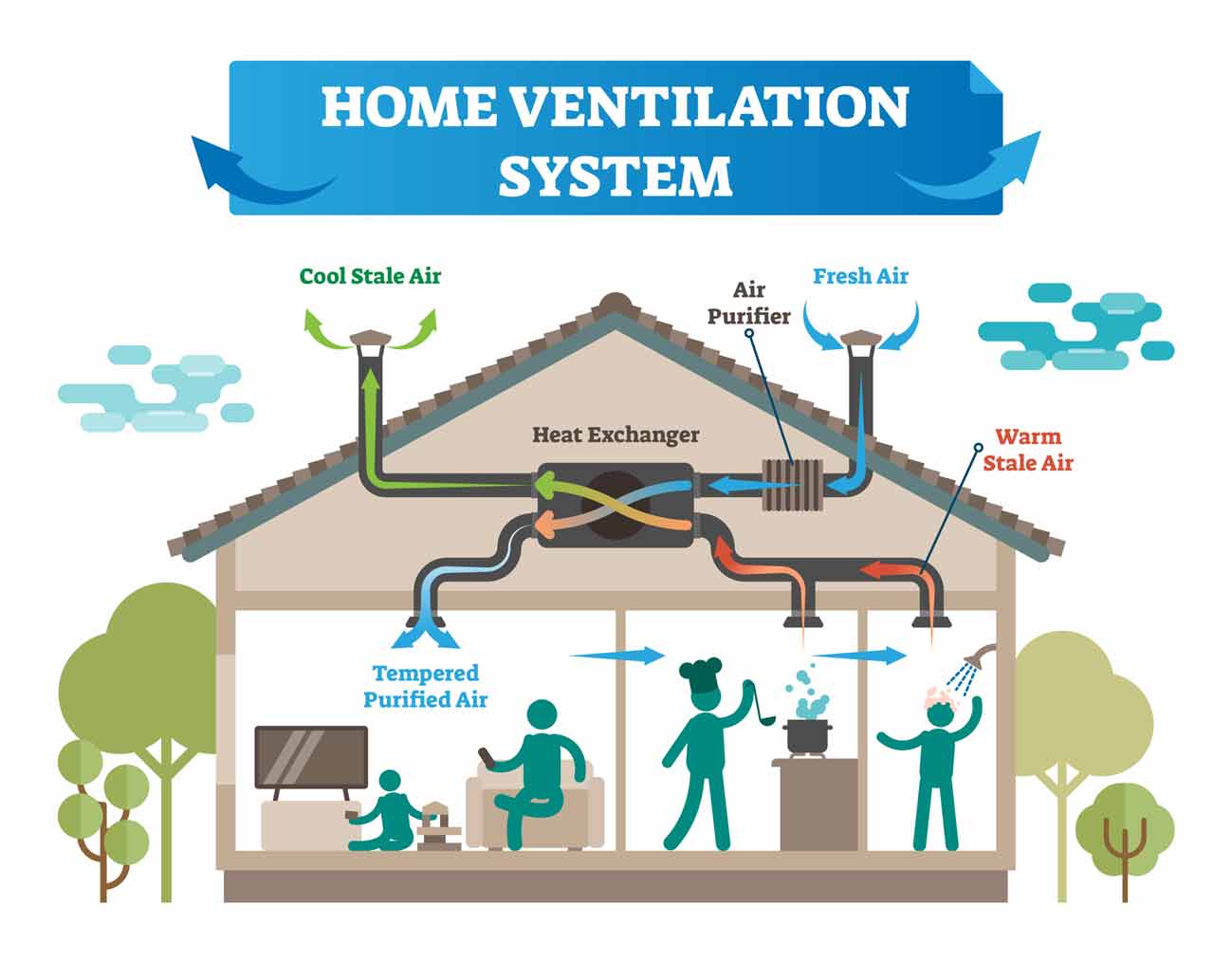Checking out the Perks of Heat Recovery Ventilation for Power Performance in Homes
Heat Recovery Ventilation (HRV) systems use property owners a functional technique to enhancing energy efficiency. By recovering warm from outbound air, these systems can considerably decrease heating and air conditioning expenses. Additionally, they provide a constant supply of fresh air, improving interior air high quality and comfort degrees. As home owners think about sustainable options, recognizing the nuances of HRV systems ends up being significantly important. What elements should one review before making such an investment?
Comprehending Heat Recovery Ventilation Solutions

Exactly How HRV Improves Indoor Air High Quality

Power Savings: The Financial Benefits of HRV
Making best use of power performance, heat recovery ventilation (HRV) systems supply substantial economic advantages for home owners. By recouping and recycling heat from exhaust air, HRVs markedly reduce heating & cooling expenses. This innovation can result in power savings of approximately 30%, depending on climate and use patterns. Property owners usually notice decreased utility costs quickly after installation, making HRVs an economically smart investment over time. Additionally, several areas supply motivations or rebates for energy-efficient upgrades, additionally improving the monetary allure. As energy rates remain to rise, the cost-effectiveness of HRVs becomes significantly clear. Generally, the incorporation of HRV systems not only promotes power effectiveness but additionally contributes to long-lasting economic savings for houses.
The Environmental Effect of Heat Recovery Ventilation
A considerable ecological advantage of heat recovery ventilation (HRV) systems hinges on their ability to decrease total energy usage. By redeeming heat from exhaust air and moving it to inbound fresh air, HRV systems reduce the demand for energy-intensive heating and cooling methods. This browse around here decrease in power demand adds to decrease greenhouse gas discharges, as less nonrenewable fuel source is required to maintain comfortable interior temperature levels. Furthermore, HRV systems boost indoor air quality by effectively trading stale air with fresh outdoor air, minimizing reliance on mechanical cooling systems that can damage the atmosphere. Overall, the application of HRV systems sustains lasting living techniques and aligns with global efforts to fight climate change by promoting power efficiency in household setups.
Selecting the Right HRV System for Your Home
Just how can homeowners guarantee they choose the ideal heat recovery ventilation (HRV) system for their needs? They need to assess their home's size and layout, as these elements influence air flow requirements. Next, evaluating the system's efficiency rankings is essential, as greater scores suggest much better performance and power financial savings. Homeowners need to additionally consider installment and upkeep expenses, comparing various brands and models for value. Additionally, it is very important to examine noise degrees, as some systems run more quietly than others. Consulting with a/c experts can offer customized suggestions based on details home problems. Taking a look at customer evaluations and warranties can assist in making a notified decision, guaranteeing that the selected HRV system properly boosts indoor air high quality and power efficiency.
Regularly Asked Questions

How Commonly Should I Tidy or Keep My HRV System?
The frequency of cleaning or maintaining a warmth recovery ventilation (HRV) system normally depends upon usage and ecological factors. Typically, it is advisable to do maintenance every 6 months to assure peak performance and air top quality.

Can HRV Systems Assist Reduce Moisture Degrees Inside?
HRV systems can properly decrease interior moisture levels by exchanging stagnant, humid air with fresh, drier air from outside. HRV Heat Recovery Ventilation. This procedure aids maintain a well balanced indoor environment, boosting comfort and preventing moisture-related concerns
What Is the Lifespan of a Normal HRV System?
The life expectancy of a common heat recovery ventilation (HRV) system differs, usually lasting between 10 to 15 years. Routine upkeep can expand its performance and functional life, guaranteeing peak efficiency throughout its use duration.
Exist Any Kind Of Sound Worry About HRV Solutions?
Sound worries with HRV systems can arise, particularly from fan operation. Lots of contemporary systems are made to lessen audio levels, guaranteeing they run silently while maintaining efficiency, which deals with potential disruptions in living environments.
Can I Install an HRV System Myself, or Do I Required an Expert?
The individual contemplated blog here whether to install the heat recovery ventilation (HRV) system personally or work with a specialist. Normally, while do it yourself setup is feasible, knowledge warranties proper capability and compliance with neighborhood structure codes, enhancing system performance.